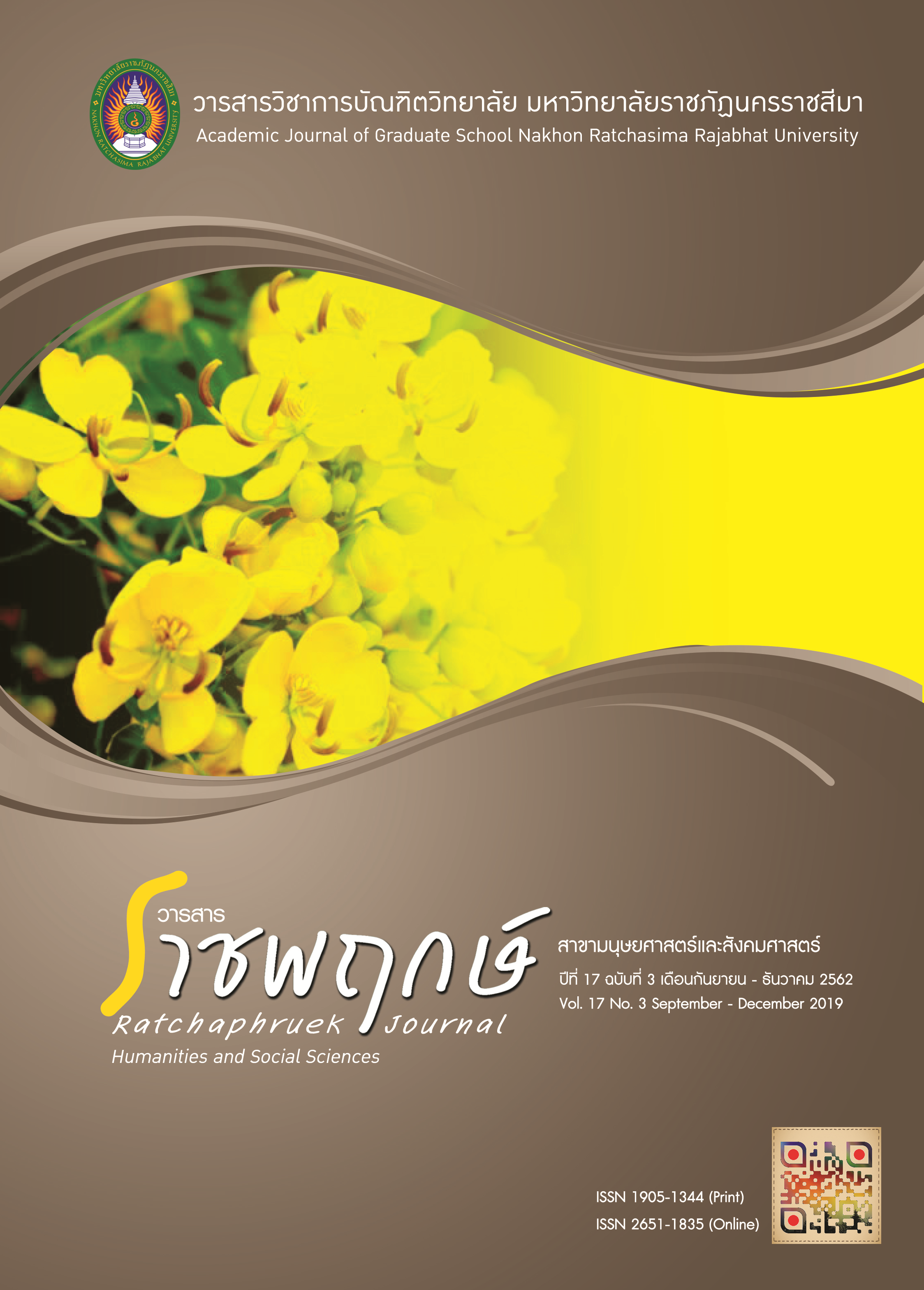Integrated High School Curriculum Development to Enhance Creativity and Innovation
Main Article Content
Abstract
This research concentrates on two aims, which were to develop the integrated high school curriculum to enhance creativity and innovation and to evaluate integrated curriculum. The curriculum consisted of principles, aims, content, structure, learning management, and measurement and evaluation. The OIC-DET learning process with 6 steps was created to enhance creativity and innovation for learners according to the curriculum. The research findings revealed that the curriculum quality which determined by experts was high appropriated and after implementation of curriculum, the results indicated as follow: 1) the mean scores of creativity and innovation of students after learning was higher significantly than before at .05 level, 2) the students’ satisfaction towards the learning of integrated curriculum was very satisfied at high level and 3) the stakeholders’ opinion towards value and possible of curriculum was very positive at the high to highest level.
Article Details
References
วารสารวิชาการ พระจอมเกล้าพระนครเหนือ, 18(2), น. 63-69.
ชวลิต ชูกำแพง. (2559). การวิจัยและพัฒนาหลักสูตร แนวคิดและกระบวนการ. กรุงเทพฯ: จุฬาลงกรณ์มหาวิทยาลัย.
ชัยวัฒน์ สุทธิรัตน์. (2557). การพัฒนาหลักสูตร ทฤษฎีสู่การปฏิบัติ. กรุงเทพฯ: วีพรินท์.
พรชัย มงคลวนิช, วรากรณ์ สามโกเศศ และประกอบ รัตนพันธ์. หลักสูตรที่ดี. ข่าวประกันคุณภาพการศึกษา มจพ., (360), สืบค้นเมื่อ 1 กุมภาพันธ์ 2561,
จาก www.qa.kmutnb.ac.th/qa_news/2559/QANEWS360_25590502.pdf
เลขาธิการสภาการศึกษา, สำนักงาน. (2559). รายงานสภาวะการศึกษาไทย ปี 2557/2558 จะปฏิรูปการศึกษาไทยให้ทันโลกในศตวรรษที่ 21 ได้อย่างไร.
กรุงเทพฯ: สำนักงานเลขาธิการสภาการศึกษา.
_______. (2560). แผนการศึกษาแห่งชาติ พ.ศ. 2560-2579. กรุงเทพฯ: พริกหวานกราฟฟิค.
ธำรง บัวศรี. (2545). ทฤษฎีหลักสูตร: การออกแบบและพัฒนา (พิมพ์ครั้งที่ 2). กรุงเทพฯ: ธนธัชการพิมพ์.
นิรมล ศตวุฒิ. (2523). หลักสูตรและการสอน (พิมพ์ครั้งที่ 4). กรุงเทพฯ: ชวนพิมพ์.
วิจารณ์ พานิช. (2555). วิถีการสร้างการเรียนรู้เพื่อศิษย์ในศตวรรษที่ 21. กรุงเทพฯ: มูลนิธิสดศรี-สฤษดิ์วงศ์.
_______. (2556). การสร้างการเรียนรู้สู่ศตวรรษที่ 21. กรุงเทพฯ: มูลนิธิสดศรี-สฤษดิ์วงศ์.
วิชัย วงษ์ใหญ่ และมารุต พัฒผล. (2558). กระบวนทัศน์การโค้ชเพื่อเสริมสร้างทักษะการสร้างสรรค์และนวัตกรรม. กรุงเทพฯ: จรัลสนิทวงศ์การพิมพ์.
สถาบันวิจัยเพื่อการพัฒนาประเทศไทย. (2557). ข้อเสนอเชิงนโยบายเพื่อการปฏิรูประบบการศึกษาขั้นพื้นฐาน. กรุงเทพฯ: สถาบันวิจัยเพื่อการพัฒนาประเทศไทย.
องอาจ นัยพัฒน์. (2557). กระบวนการเรียนรู้สู่อนาคต: บันทึกสรุปและการปรับเปลี่ยนที่ท้าทาย ใน องอาจ นัยพัฒน์ (บ.ก.), การวิจัยสถาบันและกระบวนการเรียนรู้สู่อนาคต (น. 105-120).
กรุงเทพฯ: วงตะวัน.
Beauchamp, A. (1968). Curriculum theory (2nd ed.). Illinois: The Kagg.
Naiman, L. (2018). Design thinking as a strategy for innovation. Retrieved September 16, 2018, from https://www.creativityatwork.com
Partnership for 21st Century Learning (P21). (2019). P21's framework for 21st century learning. Retrieved March 10, 2019, from https://static.battelleforkids.org
Taba, H. (1962). Curriculum development theory and practice. New York: Harcourt, Brace & World.
The Scottish Government. (2018). Curriculum for excellence: Building the curriculum 3. Retrieved May 12, 2018, from https://education.gov.scot/documents/btc3.pdf
Tyler, R. W. (1971). Basic principles of curriculum and instruction. Illinois: The University of Chicago Press.


